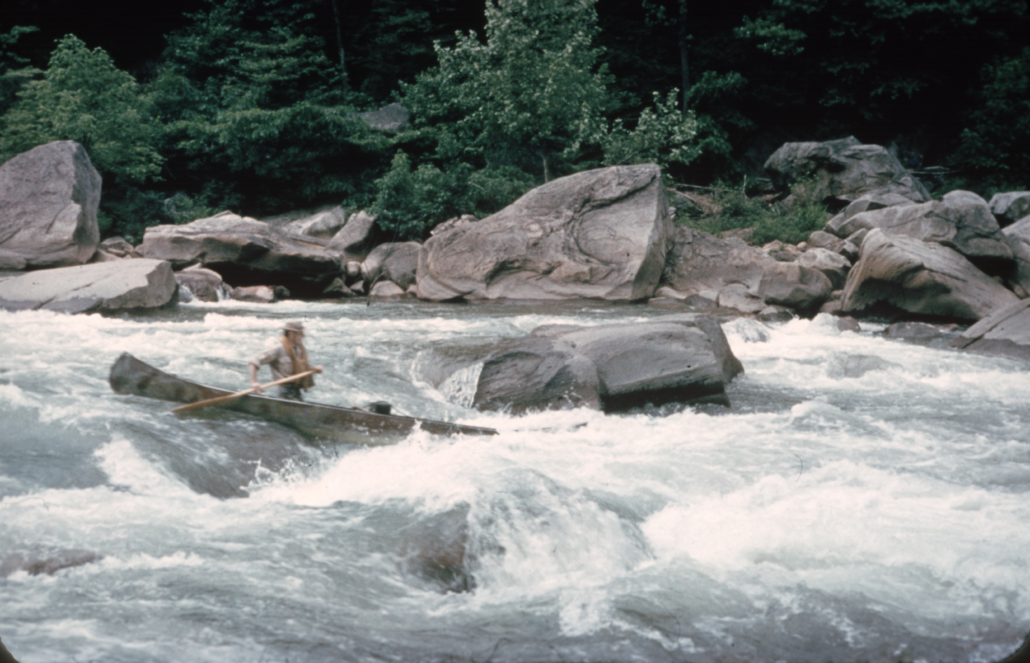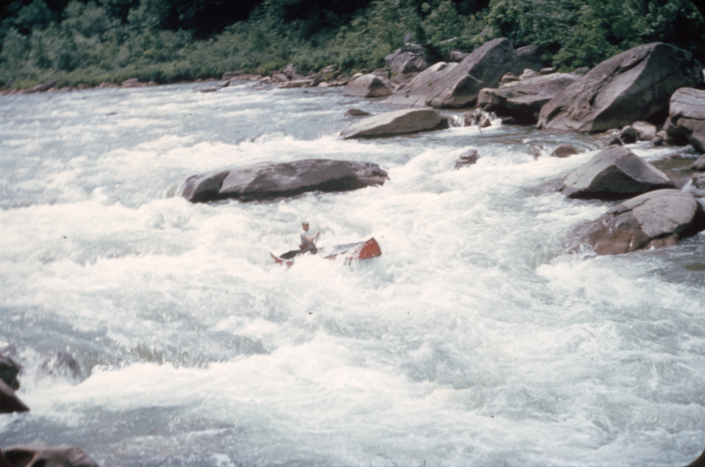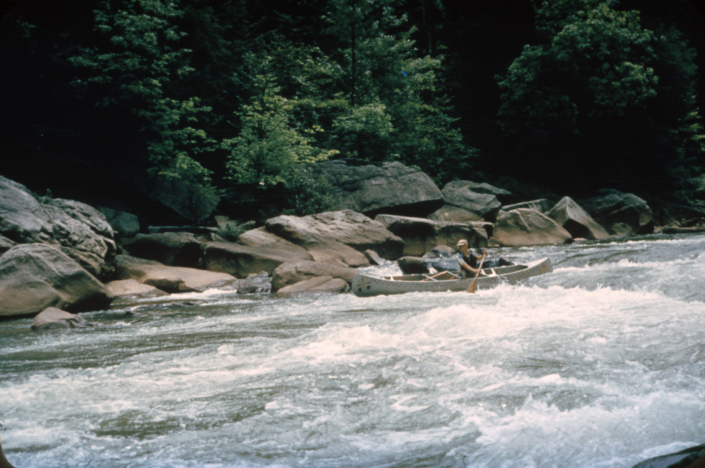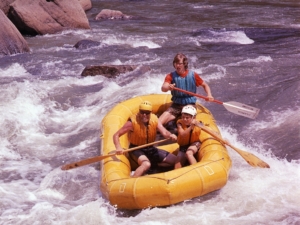 http://historyoftheupperyough.com/wp-content/uploads/2017/11/73-21-copy-e1612397228859.jpg
863
1149
chrispreperato
http://historyoftheupperyough.com/wp-content/uploads/2014/04/logo1.png
chrispreperato2021-02-03 04:20:362021-02-05 22:43:23The Guides
http://historyoftheupperyough.com/wp-content/uploads/2017/11/73-21-copy-e1612397228859.jpg
863
1149
chrispreperato
http://historyoftheupperyough.com/wp-content/uploads/2014/04/logo1.png
chrispreperato2021-02-03 04:20:362021-02-05 22:43:23The GuidesAn expert run! At the start the creek was shallow and slow. Soon it picked up until for 4-5 miles it dropped 100 feet per mile. Through huge boulder patches water funneled between rocks and tumbled in below…
…Probably the last time it will be run.
-Dave Kurtz
On May 31st, 1959, Bill Bickham, Dave Kurtz, and Tom Smyth completed the first descent of the Upper Youghiogheny River in Maryland.
They likely weren’t the first ones to journey down the gorge. That honor probably belongs to teenagers, on makeshift rafts, with too much time on their hands. Their boats were much longer than we use today and the gear much simpler. Tom Smyth managed to get a seventeen foot Grumman down the run, while Bill and Dave ran in fifteen footers. Rubber knee pads and wooden rods passed as outfitting. And helmets, as Dave recalls, “those were unheard of in those days.”
But Bill, Dave, and Tom were the first to complete the run using a style we’d recognize today as whitewater paddling. As members of the Penn State Outing Club they had honed their skills on the streams of central PA. And now, with the semester over, they found themselves in the Yougiogheny Valley with a little too much time on their hands
They began on the Lower Yough in the tiny town of Ohiopyle. Town residents warned them that the river was treacherous, and that they weren’t likely to make it out alive. But they knew from guide books that this stretch had been run before. They set shuttle in Connelsville and began their journey downriver. Tom later described the group’s encounter with Cucumber rapid:
The river dropped much faster and swept past a large midstream boulder to become a seething white mass in a deep basin. I took it near the middle and arrived with a dry mount and a lot of extra ballast at an eddy below.
–American Whitewater (May 1961)
Having completed the Lower Yough, the crew headed south to Friendsville. At that point, they knew the Upper Yough as two things. Walter Burmeister’s Whitewater Boating called the run a class VI, much like it ranked the Lower Yough. But mostly, it was a narrow strip of blue between steep green shores. They had no idea what would await them.
What they found was an endless series of rocks.
With no water releasing from the dam, the river was well below the standard release levels of today. They scraped their way through the shallow gravel beds before finally arriving at Gap Falls. Then, Tom Smyth said, “the real nonsense began.”
Bill, Dave, and Tom paddled and lined their way down the run, moving fast enough that they were only able to scout a few of the drops. They survived the zig-zagging current of Gap Falls and the relentless boulder gardens that follow. They managed their way through Bastard, Charlie’s Choice, Triple Drop, National Falls and Tommy’s Hole; all rapid names that would come from paddlers who followed in the future. But one rapid was named that day, though it’s name is forgotten to most modern paddlers.
Tom was leading the way at the rapid known today as Meatcleaver. As they arrived at a sharp bend, the “skeleton of an old oak tree blocked the passage”. Tom was able to to get out of his canoe and avoid the tree. Bill was not so lucky.
The name “Bickham’s Tree Rapid” was passed down among boaters in the Penn State Outing Club, and the crews they paddled with. Bill would later return and run the river successfully in 1962. But when he stopped canoeing later in the decade, a new era of paddlers was taming the river. Colorful new stories gave rise to new names, and the release of Wildwater West Virginia cemented Meatcleaver’s place in history. Bickham’s Tree Rapid, like the old oak itself, was just a memory for the river bed.
See More Upper Yough History
 http://historyoftheupperyough.com/wp-content/uploads/2017/11/73-21-copy-e1612397228859.jpg
863
1149
chrispreperato
http://historyoftheupperyough.com/wp-content/uploads/2014/04/logo1.png
chrispreperato2021-02-03 04:20:362021-02-05 22:43:23The Guides
http://historyoftheupperyough.com/wp-content/uploads/2017/11/73-21-copy-e1612397228859.jpg
863
1149
chrispreperato
http://historyoftheupperyough.com/wp-content/uploads/2014/04/logo1.png
chrispreperato2021-02-03 04:20:362021-02-05 22:43:23The Guides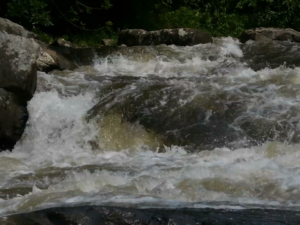
Cheesburger Falls
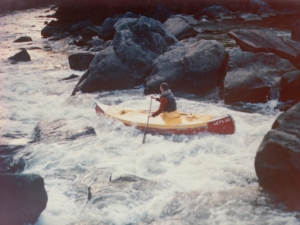
The Learning Curve
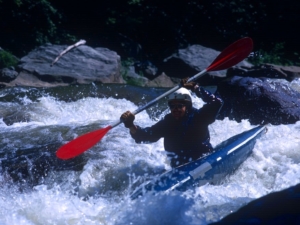
Rapid Names
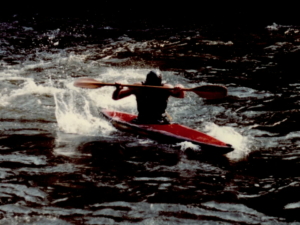 http://historyoftheupperyough.com/wp-content/uploads/2021/02/Upper-Yough-Race-e1612397108734.jpg
720
960
chrispreperato
http://historyoftheupperyough.com/wp-content/uploads/2014/04/logo1.png
chrispreperato2021-02-03 05:05:262021-02-05 22:42:33The Upper Yough Race
http://historyoftheupperyough.com/wp-content/uploads/2021/02/Upper-Yough-Race-e1612397108734.jpg
720
960
chrispreperato
http://historyoftheupperyough.com/wp-content/uploads/2014/04/logo1.png
chrispreperato2021-02-03 05:05:262021-02-05 22:42:33The Upper Yough Race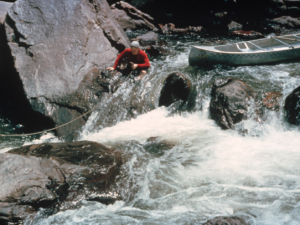 http://historyoftheupperyough.com/wp-content/uploads/2021/02/firstdescentcover-e1612492425867.jpg
944
1258
chrispreperato
http://historyoftheupperyough.com/wp-content/uploads/2014/04/logo1.png
chrispreperato2021-02-05 03:42:512021-02-05 22:39:54A First Descent
http://historyoftheupperyough.com/wp-content/uploads/2021/02/firstdescentcover-e1612492425867.jpg
944
1258
chrispreperato
http://historyoftheupperyough.com/wp-content/uploads/2014/04/logo1.png
chrispreperato2021-02-05 03:42:512021-02-05 22:39:54A First Descent
